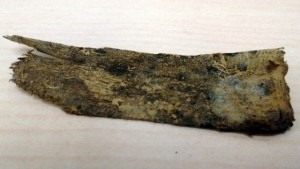Accurately Assess Airborne Fibre Levels with Professional Testing Services from LCS Laboratory. LCS Laboratory provides specialized chemical analysis of airborne fibres using the NIOSH 7400 method, a reliable and cost-effective solution for evaluating concentrations of potentially hazardous fibres, including asbestos. Whether you’re concerned about asbestos exposure during renovation, ensuring regulatory compliance after remediation, or monitoring workplace conditions, accurate fibre analysis helps protect health and safety. We provide end-to-end solutions, including sampling equipment, laboratory analysis, and technical support, ensuring reliable results for every project.
Why Is It Important to Measure Airborne Fibre Concentrations?
1. Residential Air Quality Testing
This service evaluates fibre concentrations in residential settings, providing peace of mind for homeowners and tenants. Key steps include:
- Sampling Process: We supply an environmental pump calibrated to approximately 15 L/min for collecting air samples at a typical breathing zone height (4-6 feet above the ground). Clients are instructed to collect 2-3 hours of air samples to ensure representative data.
- Laboratory testing: The samples are returned to our laboratory in London, Ontario, for analysis using Phase Contrast Microscopy (PCM).
- Sensitivity: Our analysis detects fibre concentrations as low as 0.001-0.002 fibres per cubic centimetre (ff/cc), well below the standard threshold of 0.01 ff/cc for residential air quality.
Order your residential air sampling kit online through the link below or contact us for assistance.
2. Asbestos Clearance Testing
This mandatory test ensures air safety following asbestos remediation projects. Designed to comply with regulatory standards, it includes:
- Regulatory Compliance: In Ontario, the “Asbestos Regulation 278/05” mandates collecting at least 2500L of air using calibrated environmental pumps. Sampling must be conducted under disturbed conditions to simulate maximum dust concentrations.
- Laboratory testing: The samples are returned to our laboratory in London, Ontario, for analysis using Phase Contrast Microscopy (PCM).
- Sensitivity: Our analysis detects fibre concentrations as low as 0.001-0.002 fibres per cubic centimetre (ff/cc), well below the standard threshold of 0.01 ff/cc for residential air quality.
- Sample Requirements: Multiple samples and several blank (clean) samples must be submitted for analysis. Clearance is confirmed only when all results show fibre concentrations below 0.01 ff/cc.
Order a custom-built asbestos clearance testing kit by emailing us directly. Please specify how many samples and sampling pumps you require for your project.
3. Occupational Exposure Assessment
This service measures worker exposure to airborne fibres in occupational settings, ensuring compliance with occupational exposure limits (OELs). Key details include:
- Sampling Method: Personal pumps are worn by workers, collecting air samples over 2-3 hours at a flow rate of 1-2 L/min.
- Exposure Limits: Workplace fibre concentrations should not exceed 0.1 ff/cc for asbestos or 1 ff/cc for glass and rock wool, as per MOL OEL (2018).
Contact us to discuss your workplace monitoring needs and receive tailored support for your project.
Contact LCS Laboratory Today
If you need professional air sampling and fibre analysis, trust LCS Laboratory for reliable results and expert guidance. Reach out to us to discuss your requirements and order the appropriate testing kit for your project.













